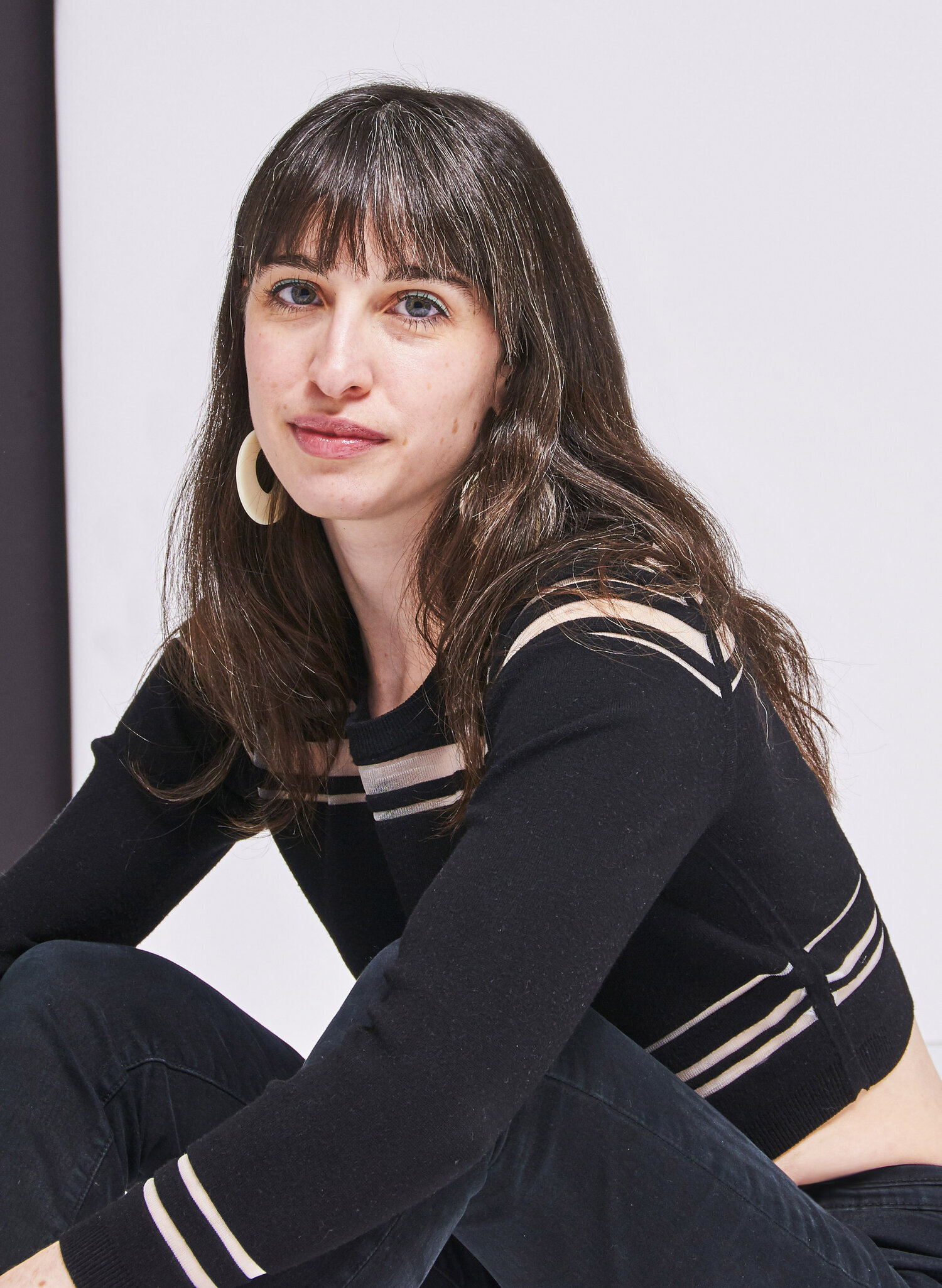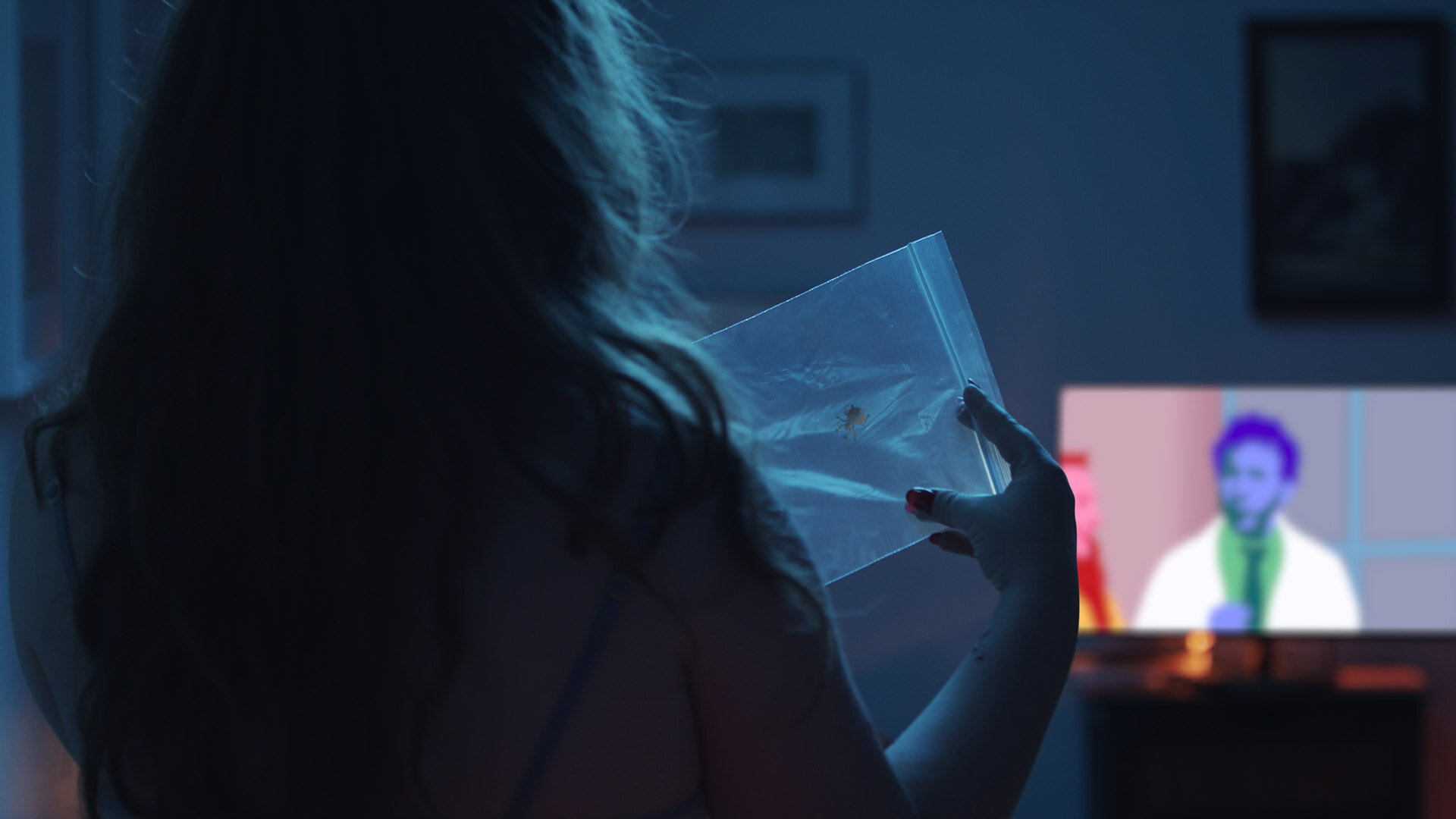February 20, 2020
ALUMNI SPOTLIGHT: Emily Ann Hoffman
NFFTY has grown into a wonderful community of over 2,700 filmmakers from around the world. Alumni have experienced success in many areas of the media industry. To celebrate these achievements, we are highlighting NFFTY alumni here!
Emily Ann Hoffman (NFFTY ‘17, ‘18), is an award winning filmmaker, animator, and artist whose work has screened at Sundance, SXSW, Slamdance, and more. Emily has been awarded fellowships and residencies with the New York Film Festival Artist Academy, the Sundance Institute, the Jacob Burns Film Center, and Mighty Oak animation studio. Her work explores female sexuality, body, and vulnerability through a comedic lens. Emily’s film Okay, Call Me Back took home the Jury Award for Best Experimental Film at NFFTY 2017, and her animated film Nevada earned her the Audience Award in the Next Level program at NFFTY 2018, as well as Best Animated Short at Palm Springs ShortFest, Best Short Film at Edinburgh International Film Festival, and more. You can catch her newest film Blackheads premiering at SXSW in March 2020!
OUR INTERVIEW WITH EMILY:
As an artist/filmmaker/animator, when you have an idea you know you'd like to bring to fruition, how do decide what medium to use?
In storytelling, my default mode is animation. It’s my favorite way to make films and is the medium that feels most natural to me, as a filmmaker. So in this case, the story usually comes first and then I consider how I’ll translate that with animation. When I’ve made live action films, that decision comes first, and then I sort through my idea journal trying to find concepts that would work or be interesting to pursue in live action. And when I paint, draw, and do visual art, that’s a completely different mindset. That’s more about the feeling, and I think I really let my cognitive brain go and just trust my gut to make the art it wants to make.
With films like Nevada and Blackheads, you use stop motion to make intimate, gross, or otherwise difficult-to-watch scenarios more digestible to an audience. How else does the medium of animation lend itself better to the stories you want to tell than live action?
There’s a layer of separation that’s innate in animation, from reality to a created world. Animation immediately asks audiences to use their suspension of disbelief, to believe in the world the animator has created. I think these “real” or “graphic” stories work then in two ways. First, the audience is more forgiving of imagery that might be jarring or shocking in live-action. Second, the medium allows the audience to let their guard down, which then opens them up to be affected by intimacy and vulnerability more readily.
What inspired the pivot into live action from animation in your film Bug Bite?
Honestly, I was exhausted by animation. I had just finished the arduous process of making Nevada frame-by-frame, and was thinking to myself, “there must be an easier way!” So I wanted to give live action a try. Turns out, it’s not easier, it’s just difficult in a different way. I’m really glad I tried it because I learned a lot, but part of what I learned is that I love the control and slow-and-steady pace animation affords. I hope to return to it again one day, but I’m enjoying animation for now!
How is the process of directing voice actors different from directing actors on a set?
In short, it’s easier! For one thing, it’s more intimate. It’s just me, the actor, and maybe the AD and producer in the booth. I like the ease of chatting with my actor one-on-one as we do the takes. I missed that intimacy when directing an actor around a live action team. And since you're only focusing on the sound of the acting, it’s easier to do many takes, much faster. You don’t have to worry about reseting a scene, blocking, camera, lighting, etc. It’s also great for editing because you can chop up multiple takes and edit them together as long as they sound cohesive, without worrying about unwanted jump cuts.
How have you seen your artistry progress from starting with animation and your first projects to where you are now with several shorts and more work under your belt?
I think I’ve gotten much better at leading a team, and understanding the value in working with a team. Coming from a visual art background I was used to DIY individual pursuits, (which I’m grateful to have as a skill), but I’m also so grateful to now recognize the lengths with which you can take a project when you combine the talents and knowledge of others.
How has NFFTY affected your life or career?
It’s such a beautiful community! I love connecting with other filmmakers who have been influenced by this festival and recognizing the positive and hardworking attitudes of those who have seen their work validated by this organization. It’s so important to encourage artists from a young age and I’m grateful I was on the receiving end of that.
Nevada and Blackheads tackle very intimate/personal topics, and you handle them with such care and sensitivity through really vulnerable characters. Do you have any advice for aspiring animators on how to achieve that humanity in their films with characters that aren't quite photorealistic?
I think it’s first and foremost about honesty! How have you felt in similar situations? How have you behaved? How have you discussed these scenarios? Just because you’re working with animation doesn’t mean your story or characters have to be cartoonish. And dramatization and conflict doesn’t always make for interesting or important stories. I think people like to see themselves and their situations reflected on screen, and this reflection can be achieved through story if not aesthetics.
What's next for you?
I’ve been doing a lot of freelance work that I’ve been enjoying — animating on other people’s films. It’s always exciting for me to be trusted with someone else’s film baby. In between I’m trying to write and hoping to pitch a TV series eventually!





